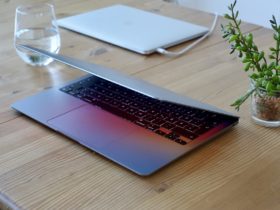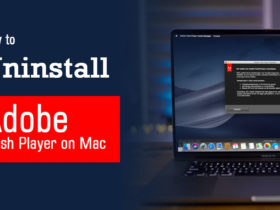According to the latest computer industry statistics, laptop computers captured 54% of the market in 2021.
That’s because a laptop offers many of the benefits of a computer, plus the convenience of portability. These factors make them ideal for those who need to stay productive outside the office.
Are you looking to upgrade your work from home tech soon? These are the types of laptops you’ll come across in your search.
Types of Laptops According to Size
Most manufacturers classify their laptops according to their dimensions. These sizes are usually listed as width by depth by height.
They refer to the following measurements:
- Width – the measurement from the left to the right of the device
- Depth – the length of the laptop from the back panel hinge to the front
- Height – laptop thickness measured at the back with the hinge closed
Most laptops taper downward from the back to the front, so you might sometimes see two figures listed when it comes to height.
Size Counts (Sort of)
Throughout their evolution, laptops have become increasingly portable while offering superior speed and performance. Nowadays, they’re sleeker, lighter, and more versatile than ever.
In general, laptop functionality decreases with size, so while they offer a lot more per square inch in modern times, the larger ones are still more powerful and efficient than their smaller peers.
That doesn’t mean a small, lightweight computer can’t meet your needs. These are the most common types of laptops available nowadays.
Desktop Replacement Laptops
These laptops suit users who only want to move their laptop occasionally or want to run it without electricity at times. They’re bulky, heavy machines that offer much of the power, functionality, and storage capacity of an ordinary desktop PC.
They usually weigh over 4 lbs and come with many ports for adding peripheral accessories. The average desktop replacement laptop measures 15″ x by 11″ by 1-2″ and weighs over 4 lbs.
Most gaming laptops and some business laptops meet these criteria.
Notebooks
The term ‘notebook’ refers to the numerous, middle-of-the-road laptops that suit a wide variety of users. Most notebooks measure 14.2” by 9.6” by 0.77”, although 15.6” screens are becoming more commonplace.
They can weigh anything between four and nine pounds.
These multi-use machines suit student life to low-end gaming and everything in between. You can choose from various processors, operating systems, and RAM when you opt for a notebook.
The majority of business laptops fall into this category, and they’re one of the most rapidly advancing types of laptops.
Ultraportable Laptops
Also known as Ultrabooks, ultraportable laptops combine much of the functionality of a notebook, in a tiny frame weighing as little as two pounds.
They’re great for all your daily needs like internet browsing, emailing, and word processing. All ultraportable laptops measure less than .75” at their widest part and are 9-13″ wide and 8 to 9” long.
They might be small, but ultraportable laptops feature modern security features, thin bezels, and long battery life.
High-end models have plenty of extras like Thunderbolt ports, in-built chipsets, Wi-Fi 6, and excellent durability.
If you place a high priority on great battery life and supreme portability, these laptops are the perfect match for you.
Hybrid Laptops
Hybrid laptops offer the best of both worlds, providing the added portability of a tablet with many of a laptop’s best features. They’re also known as 2-in-1s or convertibles.
A key feature of these laptops is a keyboard that either folds out of the way in the case of an attached 2-in-1 or detaches from the screen.
They’re among the lightest, smallest laptops with the benefit of a touch screen like a tablet, but run on a PC operating system.
Most hybrid laptops suit low-end business and home use, and their portability make them ideal for students.
Types of Laptops By Operating System
PC operating systems manage your laptop’s memory, processes, software, and hardware and determine how your laptop responds to your interactions with it.
You can’t do anything without an operating system installed on your PC or laptop, and each type has its fans. These are the four main operating systems available to consumers today:
Windows OS
Windows is the most widely used operating system globally, installed in eight out of ten computers. That means there are over 1.3 billion Windows devices in operation today.
You’ll find a huge variety of laptops to choose from if you want one with this operating system, most of them come with Windows OS already installed.
The Windows OS came about in 1985 and Windows 11 came out in 2021. You’ll find most new models of laptops featuring this latest version nowadays.
macOS
This is the second most widespread operating system in existence and featured only in MacBook laptops. It’s an exceptionally fast, secure, and efficient operating system that can greatly enhance your laptop experience.
The only drawback with the macOS is the price, although these high-quality laptops are durable and long-lasting.
Linux
Linux consists of a collection of Unix-like open-source operating systems, including Debian, Ubuntu, and Fedora. These operating systems stem from C language and assembly.
They’re compatible with PCs as well as many other devices, such as:
- Servers
- Embedded systems
- Mobile devices
- Mainframe computers
- Supercomputers
If you dislike the more mainstream operating systems, Linux is a good option for you.
Chrome
Chrome is one of the best-known Linux-based operating systems, designed by Google. It’s aimed at users who want an affordable, lightweight, fast laptop.
Developers created this OS using HTML5, Python, C, C++, JavaScript, and Rust specifically for tablets, Chromebooks, Chromeboxes, and Chromebase.
The Chrome web browser acts as the main user interface, and Chrome runs off apps downloaded from the Chrome Web Store.
Thanks to their sparse hardware, these are among the cheapest laptops available today. Even so, don’t pay full price for your Chromebook.
You should always shop around for specials when you’re in search of a brand new laptop.
Speed and Storage Capabilities
Performance and storage capacity are top priorities for every laptop user. Three factors impact these aspects, namely:
Random Access Memory
RAM is responsible for short-term memory on your computer, it remembers everything you type into your laptop before you save and is similar to human short-term memory in this regard.
Your computer software relies on RAM to operate effectively. You need at least 4 GB of RAM for day-to-day computing needs, although 8 GB is a better option.
If you want to enjoy data-heavy operations, like gaming or advanced computing, you should choose a laptop with at least 16 GB of RAM.
CPUs (Laptop Processors)
CPUs process all the instructions necessary for a laptop to function effectively. They allocate commands to the laptop’s chips and other components and perform vital arithmetic, logic, and I/O operations.
AMD Ryzen and Intel are the most common laptop processors. Although Intel is better known due to its long history and long domination of the market.
Despite this, AMD Ryzen is rapidly gaining in popularity and nowadays, these processors are neck-and-neck when it comes to performance.
When shopping for a laptop, make sure you get the latest version of these processors, regardless of which one you select. Modern versions offer top-notch graphics, speed, and reliable laptop performance.
Laptop Drives
These laptop components take care of storing your media, documents, and programs and have a huge impact on your laptop’s performance.
You can choose between two types of drives when shopping for a laptop.
Hard Disk Drives (HDD)
Hard Disk Drives are the original drive found on computers. They use a moving read/write head and mechanical platter to store and access data.
They’re excellent for storing large amounts of data in a small space, but they’re by far the slower of the two options.
Solid-State Drives (SSDs)
SSDs are a modern type of drive that works with flash memory consisting of individual cells for storing information. They’re superfast and shock-resistant, but they can’t store as much information as hard disk drives.
They’re also currently the more expensive of the two options.
Some laptops now run hybrid drive systems. These machines feature both types of drives, so they can offer the speed of an SSD as well as the storage capacity of an HDD.
Laptops to Suit Your Every Need
For many, budget is a major consideration when buying one of the latest laptops, and it’s easy to overspend when confronted with a range of shiny new tech. Rather, use this guide to narrow down your search and focus your efforts.
These are the types of laptops according to the user:
- Student – all kinds of laptops depending on your studies
- Businesspeople – notebooks, and hybrids
- Home use – all kinds of laptops
- Gaming – specialized desktop replacement laptops
One good way to find your ideal fit is to compile a wishlist of features and start hunting for your match, starting from the lowest price.
A Final Word on Finding Your Ideal Laptop
One of the most important things to remember when comparing the types of laptops available to you is to keep your budget in mind. Compare prices according to laptop specs and the extras offered.
Some manufacturers can offer a host of sought-after conveniences more affordably than their competitors. Make sure you’re comparing apples to apples while pricing laptops.
Would you like to find out more about today’s top tech offerings? Bookmark our site and check back regularly for all the latest information.











Leave a Reply